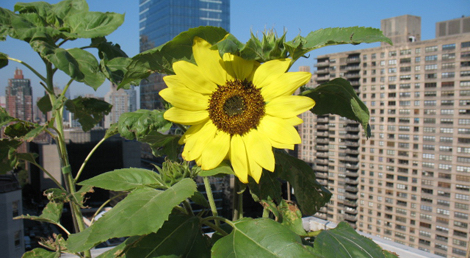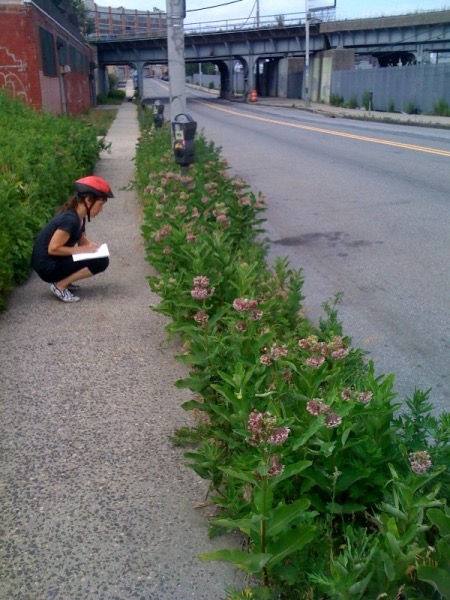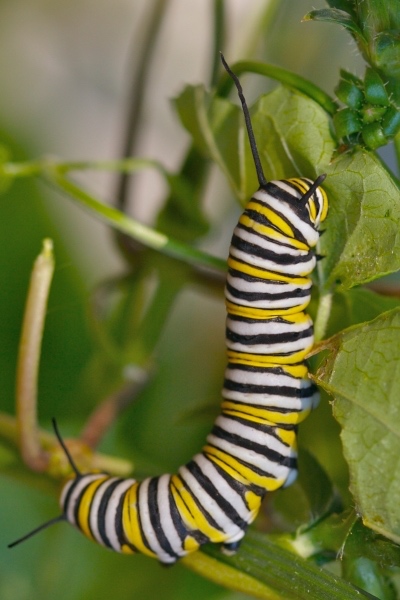
Volunteer
In Their Own Words
In 2009, volunteer Bee Watchers gathered in a focus group to talk about how the project had changed their life. Here’s a bit of what they said:
“…everywhere I go now I look for bees…I look at plants and the bees on those flowers. Out of curiosity.”
“Once you’re sensitized you can’t not watch them. You can’t not be more sensitive to movement… more aware of subtle distinctions between bees.”
“I used to garden for vegetables or pretty flowers, and now I garden for the bees.”
“It’s interesting to see that there is nature in New York City and how pervasive it is. You never thought of it in all this concrete and streets…but there’s quite a lot of activity when you look in detail.”
Bee Watchers

In 2007, the Center for Biodiversity and Conservation and the Greenbelt Native Plant Center began the Great Pollinator Project (GPP) in collaboration with the Great Sunflower Project in San Francisco. The goals of the GPP were to:
- Increase understanding of bee diversity in New York City and the surrounding region;
- Raise public awareness of native bees and their importance; and
- Improve park management and home gardening practices to benefit bee conservation in cities.
Citizen Science Bee Watchers Research Project
The purpose of the Bee Watchers project was to identify areas of New York City with good pollinator service by determining how quickly bees arrived during observation periods to pollinate flowers in backyards and gardens.
Methods: During the summers of 2007 – 2010, a total of 125 volunteer Bee Watchers observed the bees visiting a suite of native flowering plant species (purple coneflower, mountain mint, common milkweed, rough-leaved goldenrod, smooth aster, bee balm, woodland sunflower and annual sunflower) at locations throughout the five boroughs of New York City. Observed bees were “assigned” to one of five categories: honey bee, bumble bee, large carpenter bee, shiny green bee, and “other” type of bee. Over the four summers of observation, Bee Watchers submitted almost 1,500 observations from all five boroughs of the city.
General Results: The eight different flowers that were included in this study varied in how quickly and consistently they attracted bees. They also varied in the degree to which nearby flowers and surrounding landscape influenced bee visitation. For the purposes of this report, we provide general findings for all flowers combined. Generally, focal flowers located in more natural areas (parks, community and private gardens) were more successful at attracting bees than those in more artificial settings such as rooftop gardens, window boxes, and street-side locations. In addition, focal flowers in gardens with more nectar resources (e.g., those with more than 100 flowers) were visited by more bees than those located in areas with fewer surrounding floral resources. Theoretically, a large number of surrounding flowers could compete for pollinators and end up reducing bee visitation to focal plants. Contrary to this idea, however, our results indicate that an abundance of surrounding flowers facilitates increased pollination service to focal plants. This suggests a “magnet effect” whereby increased floral resources attract an abundant and diverse pollinator community, which then leads to increased pollination services for many flowers in the area.
Land-Cover Analysis Results: We also looked at the land cover (tree canopy, grass/shrubs, bare earth, water, buildings, roads, other paved surfaces) around each observation point using raster files provide by New York City Department of Parks and Recreation. These cover types were ultimately grouped into two main habitats: natural (tree canopy plus grasses/shrubs) and hard surfaces (buildings, roads, and other pavement). (Water and bare ground made up less than 1% of the habitat so were not included). Results indicate that the percentage of natural habitat up to 100 meters around an observation point (approximately 1 city block) plays a significant role in determining pollinator (bee) visitation to focal plants. This highlights the importance of increasing green space at the neighborhood scale to benefit local pollination service. This can be achieved by creating community and rooftop gardens, adding flower beds to front and back yards, and increasing green space wherever possible.
Other GPP research: We also worked with volunteers to determine what motivated them to become citizen scientists. Results of this work can be found in: Toomey, A.H. and M.C. Domroese. 2013. Can citizen science lead to positive conservation attitudes and behaviors? Human Ecology Review (20)1:50-62. Additional publications are being submitted to various journals but as of this date (April 2014) have not been published. Any questions, please contact Liz Johnson (ejohnson@amnh.org or beewatchers@gmail.com).
Other Pollinator Initiatives

For general information about citizen science projects, check Citizen Science Central on the Cornell University website. Below are some additional ways you can participate in scientific research on pollinators and pollination.
Fall Activities
Scientists at Discover Life are gathering information about species diversity on goldenrods across the US. Check the website for details – then find some goldenrod and start photographing insects!
Spring/Summer Activities
Pick a site, set up your own research project, and inventory the bees over the course of a season.
Monarch Larva Monitoring Project
Volunteers collect long-term data on larval monarch populations and milkweed habitat by counting eggs and caterpillars over the course of the season. The overarching goal of the project is to better understand monarch distribution—how and why monarch populations vary in time and space.
The Great Pollinator Project is allied with the Great Sunflower Project—we used the same data-collecting protocol and the same plant species for observation. You can participate directly in the Great Sunflower Project by visiting their site and signing up.
In April, observe bees visiting the spring beauty (Claytonia virginica) to help researchers find out more about which species pollinate this native spring wildflower.
North American Butterfly Association Fourth July Butterfly Count
This annual butterfly count is part of an ongoing, nationwide project of the North American Butterfly Association. One day each summer, participants count all the butterflies they can find within a given search area. Check the website to find a count area in the New York metropolitan region.
Celebrate National Moth during the last week of July. Check the website for information about activities and projects across the country.
